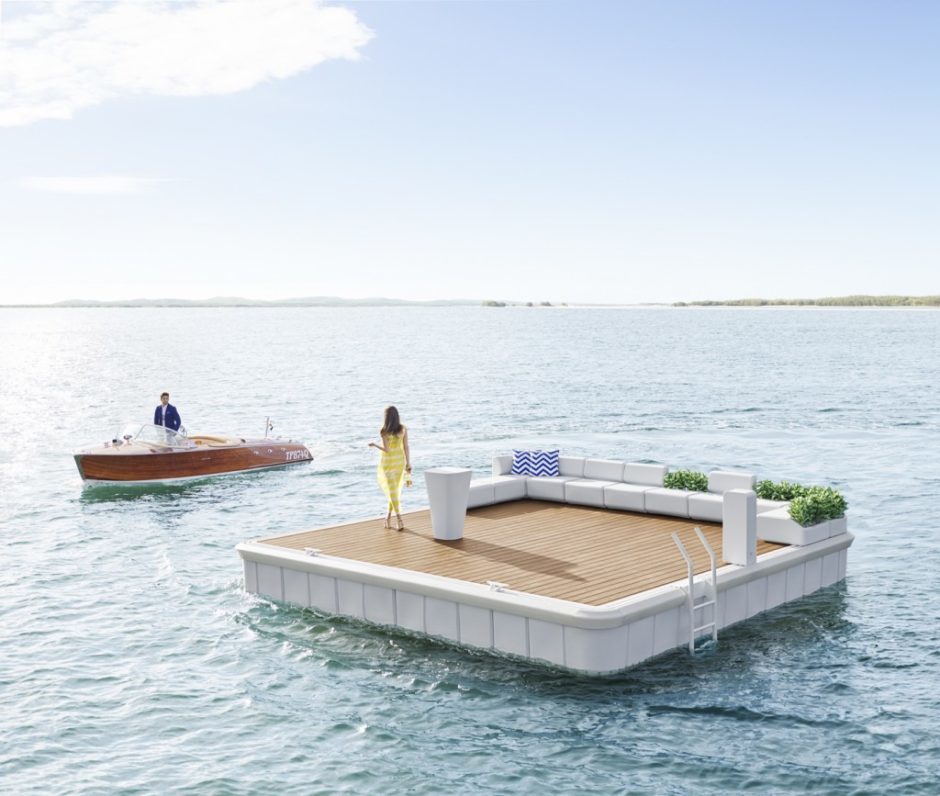
The Floating Experience at AGS Waterscapes
Lake Muhazi, just a 45minutes drive away from Kigali, is one of the country’s scenic treasures. This tranquil cove in the eastern province of Rwanda is ideal for a day trip away from the bustle of the city where you can have your favorite dishes watching the sunset over the small boats dotting the lake.
The sights of fantastic birdlife like flotillas of pelicans sail ponderously across the open water, majestic crowned cranes preen their golden crests in the surrounding swamps, while jewel-like malachite kingfishers hawk silently above the shore.
AGS Waterscapes, one of its kind lake view resort offers a blend of natural beauty and recreation with a touch of Rwandan hospitality. AGS welcomes you with a floating boat restaurant along the lakeside of Muhazi where you can enjoy a beautiful boat cruise through the lake while having your favorite dishes and drinks.
The restaurant on the lakeside can accommodate more than 40 people will have a backdrop of the beautiful lake and the misty mountains, a fantastic experience for the guests. Comfortable fully furnished cottages are on site for those who would wish to spend a night.
Traditional wooden hut restaurant and an elevated tree house giving a fantastic view of the lake are some of the few attractions you would like to experience.
The floating boat restaurant, a first of its kind in Rwanda which can accommodate around 30 people will cater to corporate clients as well as large group gatherings.
Individual boat cruises can be arranged for clients with the support of a live music band on board. AGS is looking to develop this destination as a “One Day Get Away” package.
AGS waterscapes offer a variety of entertainments like fishing, boating, beach volleyball, dedicated dance floor, etc.123f
Being a tour operator itself AGS will conduct and manage tour packages for corporate and independent groups. The specialty being the only boat cruise operator in the tourism arena “AGS Waterscapes” will also be incorporated in the packages of other tour operators too. Our AGS office in Kigali will handle the advance reservations thereby giving more convenience to the clients. Our website will provide sufficient details about waterscapes for online inquiry and booking.
Read More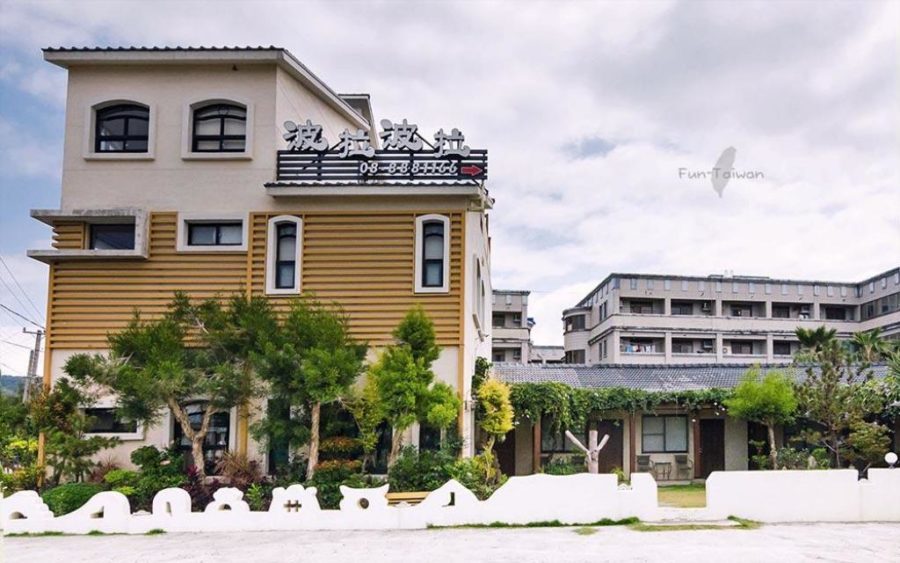
Bora Bora Guest House
Bora Bora is a relatively new Guesthouse that was opened in 2012. It is situated in the middle of a very relaxing wooded plot, along the road leading to the International Airport of Bujumbura town and approximately 300m from Chanic roundabout. The guestrooms are neat and well equipped, with a bathroom (with hot water), a television, and safe. A room ranges from
70 to 99 dollars. The guesthouse also has a restaurant that can accommodate 30 people and a bar.
One of the most unforgettable experiences at Bora Bora is the large green space that comprises a charming garden and trees from which one can hear the birds chirping in the morning and singing in the evening. All this is around a large swimming pool. “Breakfast, lunch, and dinner are provided for our guests following the menu day or according to their orders,” says Mr. Rudy Ghirini, the CEO of Bora Invest Group that owns the guesthouse.
Among other services offered by the guesthouse, include space for hosting cocktails or parties in the gardens or at the restaurant. The drinks are also affordable. For bigger events, arrangements can be made on request for them to be held at Bora Bora Beach, with music played by the great Deejays of Burundi.
Come to Bora Bora Guesthouse, and see why so many people from all over the world keep flocking to it for the
a most memorable experience of Burundi.
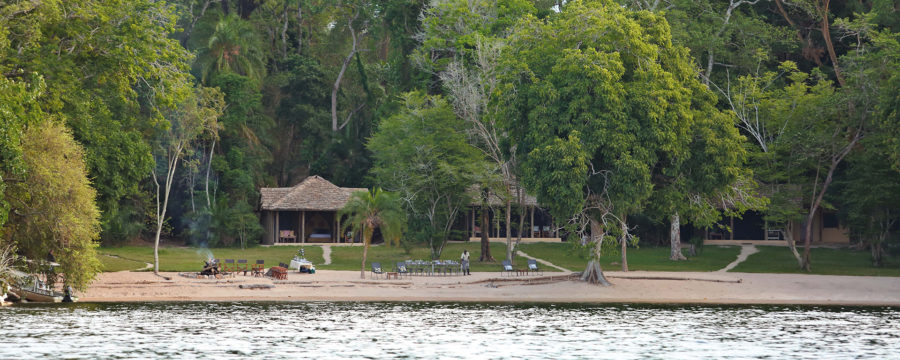
Rubondo Island Camp Will Take Your Breath Away
Think you’ve seen it all?
Landing on Rubondo Island is like arriving in Jurassic Park- a feeling that you are going back in time, to a place forgotten by the world outside. What’s more, everything on Rubondo seems to be bigger than anywhere else: The trees have grown undisturbed for centuries, the elephants have such a good diet that they dwarf their Serengeti cousins, the Nile Perch that call the waters around the island home have been known to reach over 100kg, and the crocodiles that bask on the rocks seem almost prehistoric.
A short flight from Kigali, Rubondo Island has lain unexplored for decades and is the epitome of peace and tranquillity. The island has no human inhabitants and the only accommodation on the island is Asilia’s new luxury Rubondo Island Camp, making it the ideal escape whether you want to recharge or get out and explore.
The island has an intriguing history that dates back to 1966 when Dr. Bernhard Grzimek (one of the key drivers behind the establishment of the Serengeti National Park) brought 17 chimps from European zoos to Rubondo Island in an effort to establish a safe haven for them, away from the threats of poaching and industrialization. Within a year they were able to eat wild foods and construct nests and today their descendants are very much at home on Rubondo.
While on the island, you get to walk through chimp territory with Asilia’s expert guides, and although sightings are not guaranteed, the knowledge the guides impart makes this a very enjoyable (and educational) activity. While out in the forest you will see beautiful butterflies, orchids, and maybe even come across a curious bushbuck.
For those who prefer to be on the water, the fishing here is world-class, the Nile Perch famous for the monstrous size they reach! Another way to explore the lake is on the camp’s traditional dhow. Dhow sailing at sunset with a sundowner drink in hand is a peaceful way to end the day. For the more active the camp also has canoes and can take guests out on a guided paddle through the wetlands.
The birdlife here is prolific with over 300 species recorded to date and what’s probably the highest density of fish eagles in East Africa, and cruising silently past in canoes affords excellent opportunities for photography.
If all of this activity sounds like hard work, then rest assured you can unwind at the camp. The camp is set along a stretch of white sandy beach and the sound of the lake lapping against the shore will lull you to sleep at night (if you aren’t disturbed by a hippo honking close by!). The main mess area is open on 3 sides to give a 280-degree view of the lake, and the natural rocks on which the building stands have been incorporated to give you a feel of nature all around you.
The meals are a real treat at Rubondo. After you have been woken in your suite with your choice of tea or coffee (a luxurious way to be woken up!) breakfast can be as big as you would like it to be with fresh fruits and yogurt or the full works with eggs and bacon. It is likely that a curious bushbuck will be standing not far away watching you eat! Lunch might be a picnic while you are out exploring or a selection of fresh salads if you are sitting down in camp. Dinner is always a three-course feast.
The Camp is easily accessible from Kigali with daily flights on Coastal Air departing at 6 am and landing at 7.45 am on Rubondo Island (www.coastal.co.tz)
Rubondo Island Camp has special rates for Africa residents, from US$ 280 per person per night on a full board basis, including game drives, hiking, and canoeing. Boating activities have a surcharge of US$ 200 per boat per day and there is a national park fee of US$ 30 per person per day.
Find out more at: www.asiliaafrica.com or enquire with: david@asiliatanzania.com
Read More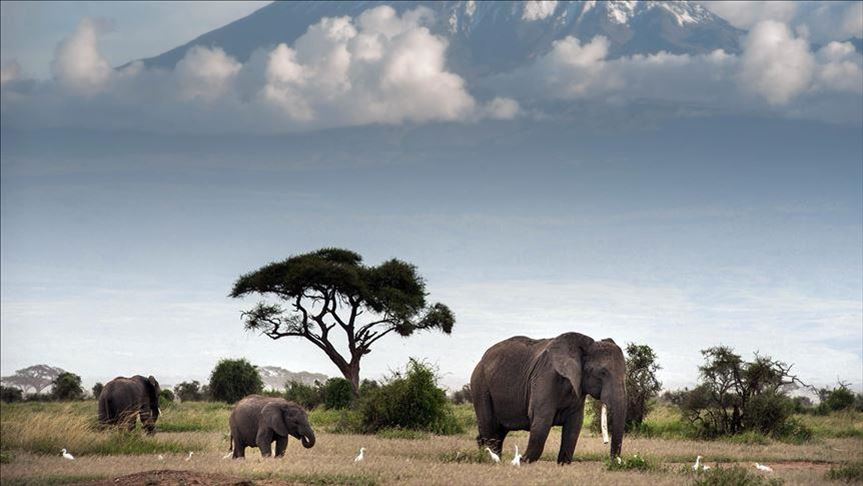
Domestic Tourism in Rwanda
It was on Friday the 3rd of May that I drove South East of Kigali to Nyungwe Forest National Park specifically to Nyungwe Forest Lodge for the weekend. I learnt that Nyungwe covers over 1000 square kilometres and is home to over 290 bird species. It’s also true that Nyungwe “is the largest Afro-montane forest in East and Central Africa and one of the most ancient dating back to before the ice age”, rich in biodiversity with “over 250 different types of trees and shrubs” in addition to rare primates like the chimpanzee, Angola Colubus, and the Blue monkey.
I was fortunate enough to meet a colleague who works with a wildlife conservation project. This knowledgeable gentleman shared with me some literature and history about Nyungwe. Everything was so fascinating that I started wondering why I have never considered visiting any park.
It’s from that moment that I realized that the only possible reason most of us don’t spend our disposable incomes on visiting local tourist attractions and sites is absolute ignorance. We seem not to know what is on offer and to some extent, the Rwanda Tourist Agency has not done enough to promote domestic tourism as it has for the ‘high end ‘ tourists from abroad who can afford to pay 200 -300 US$ at the various hotels and lodges.
In my opinion, domestic tourism is very vital for the tourism industry. It’s always easier for some countries which promote both local and international tourism especially during periods of low international arrivals. Most countries go as far as reducing hotel and tour rates during such periods and therefore attract local groups and families who enjoy the beauties of their own countries at very affordable costs. This way, their industries remain operational and residents do not only enjoy but also become knowledgeable about the tourism sectors of their nations.
In the case of Rwanda, I acknowledge the relentless efforts of many who believe in this ideology. We are not yet there but there are signs that we shall one day achieve our target. However, as we collectively plan to promote domestic tourism, I recommend that we put our emphasis on the youth and encourage tourism operators to construct student centres in national parks and other tourist destinations.
At Queen Elizabeth National Park in western Uganda, you often find busloads of school and college students on tour. They don’t stay in Mweya Lodge with other tourists but in hostels with double-decker beds nearby, at a low cost. Similar facilities are enjoyed by Kenyans in Tsavo National Park and many other European countries where student centres have accommodation where the beds are triple dickers.
This is one of the many ways of making tourism affordable to locals. What the operators possibly lose in cost per unit, they gain in numbers and at the same time promote the industry as the students are future clients of the industry. It is important to note that these centres can be used by other groups who may wish to cost-cut on accommodation and food. Another notable feature of domestic tourism is campsite facilities where groups can pitch a tent and prepare meals for themselves at a reasonable cost while enjoying the full benefits of their tour.
I call upon all stakeholders to participate in this cause by organizing forums to educate the general public about the benefits of tourism and eradicate the misconception that it is for only the rich and more so for foreigners.
I commend the tremendous work done by Rwanda Development Board and other players who intend to make this a reality in Rwanda. The Tourism Agency has `set the agenda in relation to preferential treatment of locals through park entry fees. For example, Park Entry Fees for Akagera National Park for nationals is 1000 Rwanda francs, 5 US$ for foreign residents and 10 US$ for foreign visitors. I encourage the operators to also work out viable methods of encouraging locals to benefit from the industry.
To the general public, this beautiful land of a thousand hills belongs to you all, please enjoy it and let’s all set the platform for our children and great-grandchildren to emulate us. My drive to Nyungwe was a smooth one due to the improved road infrastructure that can enable even non-four -wheel drive cars to access the park.
We are always better together, we can do this
Read More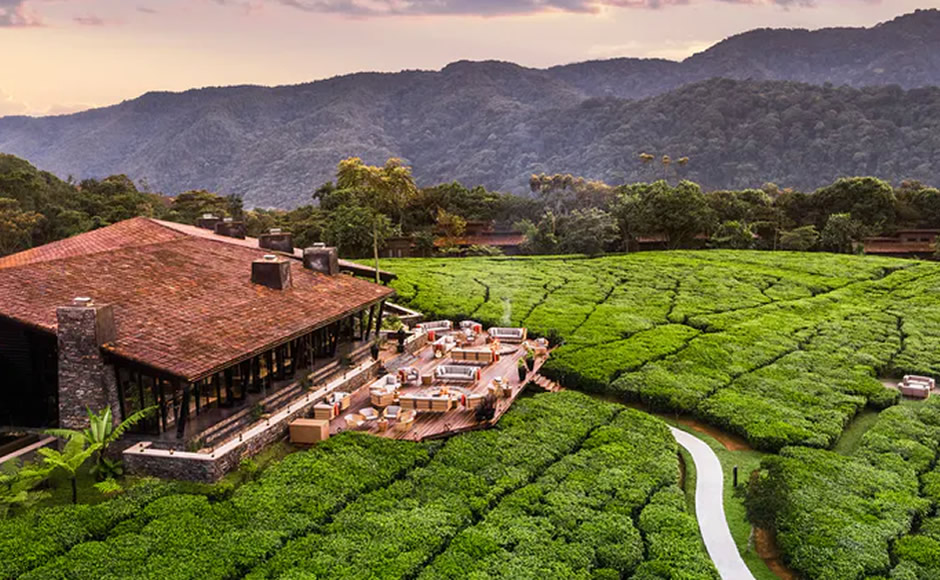
One & Only Nyungwe House
Most people enjoy travelling but it’s even more enjoyable to travel to one of the most fascinating destinations in the region. I had an opportunity to travel to Rwanda’s southwestern district of Gisakura. Should I still mention where? It has to be Nyungwe Forest Lodge.
This 5-star luxury lodge situated in a tea plantation on the edge of the Nyungwe Forest National Park, the largest tract of mountain rain forest on the African continent offers a contemporary yet authentic African Experience to every visitor.
My first impression was the architectural work of this property. The luxurious suites are built from imported plantation logs and are all raised off the ground and forest facing, perfectly fitting harmoniously within its beautiful natural surroundings. The interior design of the lodge allows the rich colors of Africa to warm any soul.
The beauty of the lodge is supplemented by a passionate staff that made my stay very comfortable. Through several conversations with different people with different responsibilities at the lodge, I could easily tell the desire, love and pride of each one of them. From General manager to a casual labourer, very one is proud to be associated with Nyungwe forest Lodge and credit to them for the incredible work done to ensure quality service delivery and in my opinion the best customer care in the region.
The lodge offers fine African and international dishes to suit all palettes. In an inspiring setting, diners can choose an alfresco lunch at the pool or dine in the elegance of the main dining room. Private breakfasts can be arranged on the outside terrace overlooking the tea plantation and the forest. Regardless of your selection, you can be assured of fine fare, prepared with fresh ingredients and Rwandan flair.
Facilities include a heated rim-flow swimming pool, Boma area for outdoor dining and drinks, relaxation retreat with two treatment rooms and a Jacuzzi pool, a fitness centre with treadmill, cycle and free weights, conference facilities with AV equipment accommodating 16 delegates, tea lounge and bar, restaurant with including a private room with private terrace, daily laundry services, and wireless internet access.
Nyungwe National Park offers guests the opportunity to enjoy various activities upon arrival at the lodge. Activities on offer include the canopy walk, various trails and treks to see primates in their natural habitat. Persons under the age of 15 years are not permitted to go on the guided walks to the Chimpanzees but are able to see the other primates and wonders of the forest.
All the luxury king-bedded suites of the lodge contain International electric adaptors, Air conditioning, a Private deck with forest view, Private mini-bar, En-suite bathroom with indoor shower, Tea and coffee making facilities, International dial telephones, Hairdryer, Flat LCD screen and digital satellite channels and an electronic safe (Laptop size) for all your valuables.
This is a perfect destination for all those looking for comfort and class in one of the friendliest and most scenic countries in Africa. I had an unforgettable time at the lodge and the same experience awaits all of you.
Read More
Dining in Burundi
Tanganyika
This is one of the best restaurants in town with nice meals served at your convenience. It is located near the port and is housed in an ancient designed building with excellent customer service a cooling breeze from the lake. It probably has the most delicious chocolate mousse in town and excellent fish Carpaccio, other fish and meat dishes- such as sangala with blue cheese, grilled lamb chops.
Khana Khazana
This is one of the branches of the restaurant which is also found in Kigali and Kampala. The restaurant is located in the leafy kiriri suburb of Bujumbura, off Avenue de Belvedere. It has a beautiful luxurious pavilion seating where you can be served great Indian foods with numerous vegetarian options. It’s a very spacious place that can accommodate big groups.
Belvedere
This restaurant is situated upon a hill with a spectacular view of the town, lake, and the mountains of the Democratic Republic of Congo. It’s where you can find a great sunset cocktail. There is also a bar counter where one can sip a cold beer f, eat some potato curls and look at the beautiful sceneries of Bujumbura. This five-star spot serves a wide range of European cuisine supplemented by good customer care.
Bora Bora
Situated on the lake, about 10 minutes out of town, next to the Hotel Club du Lac Tanganyika, Bora Bora has a fabulous atmosphere. Tasty pizzas are always available to all to have and it’s free to take home whatever one may not be able to finish. Salads and fish are also served. This is a perfect weekend spot for all fun lovers. There is also free wireless internet.
Chez Andre
Along Rue Rwangasore, a Greek-themed restaurant with high levels of comfort and luxury on the right as you go up the hill. It serves amazing local dishes with various types of fish, steak, and pasta.
Botanika
A boutique hotel has good salads and fish steamed with vegetables, hamburgers, and other treats. Wireless internet is at your disposal – so you can surf while eating or having a drink on the terrace or garden. Food is served relatively quickly and its quality is always good.
Aroma
This is an exotic coffee shop in town, very tranquil, with wireless internet and places where you can plugin. They serve real Burundian coffee and other foods as well. They also have fruit smoothies and ice cream.
Ubuntu
This great spot is on the lakeside with nice gardens and a very attractive atmosphere. Sometimes, you can see hippopotamuses while you take a bit at this restaurant. They have delicious pizzas- which are half-priced on Tuesday and Thursday nights.
Read More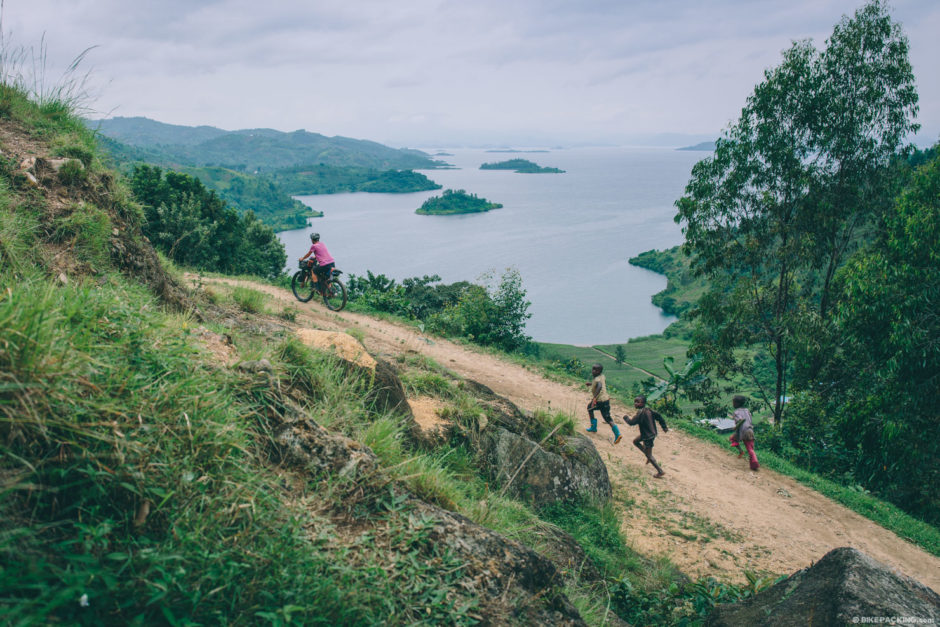
RWANDA’S NEW ‘CONGO NILE TRAIL’ –HIKING THROUGH RURAL AFRICA
Kilimanjaro and Mt. Kenya, treks into the Rwenzori Mountains, or hikes up Mt. Elgon have long been available, hiking across rural Africa has not. It is the first such trial of its
‘Before I explored the new Congo Nile Trail, at least the part from Kibuye to Gisenyi, questions were asked of my sanity, how anyone could walk across rural Africa, considering the presence of wild animals, opportunistic bandits, and reckless drivers ready to catapult one into the nearest ditch. Of course, I have dealt with questions of this nature for a long, but those ‘ignorant never seem to stop bringing that up. They also never deter me from doing something new, something others have not done yet but something I always feel others should do too, to gain the experience life’s memories are made of……………..
In the first part of the Congo-Nile trail which hugs the shores and mountains along Lake Kivu from Kamembe to Gisenyi. We talked about the newly introduced Congo Nile Trail. This is the second part of the trail Congo Nile Trail We had our 4×4’s in attendance at all times, being a media trip and trial run for the trail ahead of the official launch, but while on foot we could have crossed anywhere, some sections were a challenge for the cars. The route from Kinunu to Gisenyi, where the 72 wooden bridges and crossings are progressively being replaced with new concrete bridges, to the relief of the locals who no longer need to fear ‘their bridge’ being swept away.
In fact, many of them have been employed to actually work on the construction teams, generating some much-needed income for the local communities while substantially improving their local infrastructure and making their roads truly all-weather, all year round. Having the cars ‘around’ also helps to assist more quickly in case of a sprained ankle, or – when king – tend to the scratches and knocks sustained in a fall, and having a 4×4 ‘escort’ which carries the luggage and periodically teams up with the hikers, can be arranged by the trail guides and trip organizers at a cost of course.
The Congo Nile Trail is breaking new territory, breaking new ground, and while climbs up Kilimanjaro and Mt. Kenya, treks into the Rwenzori Mountains or hikes up Mt. Elgon have long been available, hiking across rural Africa has not. It is the first such trial of its kind in eastern Africa and runs along some of the most scenic parts of Rwanda, and the Democratic Republic of Congo is always within sight across the waters of Lake Kivu. RDB in conjunction with local communities has created a sure winner and I for one wish to come back and hike the sections of the trail not covered by this special trip.
And in closing some practical hints: good hiking boots are essential, as are rainskins because during my hike it rained every day, at times very heavily indeed. Waterproof backpacks are equally important, to avoid equipment or spare clothes getting wet. Umbrellas are not really suitable as hikers always need both hands free. Trips can be arranged through licensed tour operators or the Congo Nile Trail organization, which also attaches trained guides to the hikers. Information can be found via www.rwandatourism.com or via the RDB website www.rdb.rw.
And printed material including an excellent map is available while a dedicated website for the trail is about to be launched, soon after the trial itself was being formally declared open. Discover Rwanda’s hidden treasures via the Congo Nile Trail, the very latest tourist attraction to explore the country by hiking, biking, 4×4’ing, or boating. The spirit of Christmas at L’esperance; an orphanage with a difference.When on the newly created ‘Congo Nile Trail’ a few weeks ago, which hugs the shores and mountains along Lake Kivu from Kamembe to Gisenyi, a side trip to a unique orphanage, ‘L’Esperance’ in Kigarama, captured my attention and imagination to such an extent, that it has not left my mind since then. Over the holiday season, I was repeatedly thinking of those children, and their caregivers and foster parents, especially as Christmas Eve came calling. And when Christmas Day finally dawned, it reminded Amahoro Island’s landing.
Photo Prof. Dr. Wolfgang me of what I had seen there, and how like magically L’Esperance was gifted with the spirit of Christmas, seemingly for the entire year. Christmas, after all, is supposed to be a season of sharing, especially with the disadvantaged, the less fortunate, and those in greater need than oneself, and at L’Esperance that spirit was ever-present, even in November when I visited, and surely prevails throughout the year. Set high in the hills above Lake Kivu, this orphanage is unique in many ways, not the least for aiming to become self-sufficient in all their aspects of daily needs, although the Rwandan government has thankfully stepped in to absorb school and education fees for the children who found a home in the truest sense at L’Esperance.
At least 120 children and infants were at L’Esperance at the time I visited in November and we, I was part of a media invitational tour of the new ‘Congo Nile Trail’ just before it was officially launched, were received with such warmth and genuine affection, that there and then I decided that this was a story worth telling in greater detail. L’Esperance is part of a German-based NGO, Children’s Aid International, and came to Rwanda in 1995, the year after a gruesome genocide had killed more than 800,000 people and left tens of thousands of orphans in its wake. However, in the midst of this tragedy of epic proportions, the idea was conceived to bring L’Esperance to Rwanda and create a place of refuge, safety,
and caring love for those little ones who had survived, and yet unbeknown to many of them – due to their tender age – also had lost their entire families. Initially set up to cater for but 100 children and infants, L’Esperance is now the home to 128, some of them still there since they first were welcomed in 1995 as babies and toddlers while others have since then joined. Yet others have completed school, gone to university, graduated with honors, and are now ‘old boys and old girls’ of L’Esperance, the ONLY home they have ever known since a cruel fate had robbed them of their families in 1994.
Volunteers from around the world, the United States, the Netherlands, and even from Poland are giving their time and effort to work with the children and make their own personal contribution. The team at L’Esperance has led by self-professed ‘dictator’ Victor Monroy, who presented himself as anything but a dictator but a gifted communicator, able leader, and visionary head of the Kigarama orphanage. His intention is to create a totally self-sustained facility able to feed itself, educate the kids, and offer them the opportunity to ‘become anything they want to become, anything they want to be’ as he put it to me when we discussed his work. Given half a chance to talk about L’Esperance, Victor would launch into both histories as well as the future of the orphanage, all at once, buoyed by the chance to get the message out to the world what good has been achieved and how much more could be accomplished given the right support with the right tools, through donations aimed to expand and improve the existing facilities. And going by the impressive list of existing partners, he and his totally committed team of volunteers and staff have made an impression around the world.
Engineers without Borders – from the Johnson Space Centre in Texas and from Colorado University, The Manna Energy Foundation, United States, A Better World, Canada, Global Water Challenge, Washington DC, Catholic Relief Services, Birambye International, United States are just a few major names who have in the past and continue to assist L’Esperance at Kigarama to make certain that the children there not just have a chance of a productive future but are equipped to take such chances with both hands.
Set in more than 20 acres of fertile land, L’Esperance is growing all their fresh produce themselves, and having planted hundreds of avocado and mango trees are also able to sell to nearby markets, generating sustainable income for the orphanage which can then be used to purchase other items such as sugar, salt, cooking oil, detergents and a range of other goods needed every day to keep the ‘wheels turning’. 6 ‘houses’ are the ‘homes’ of the children, each one led by a member of staff who is the focal point and ‘mother and father’ to the kids, someone they can relate to and can conide in.
Read More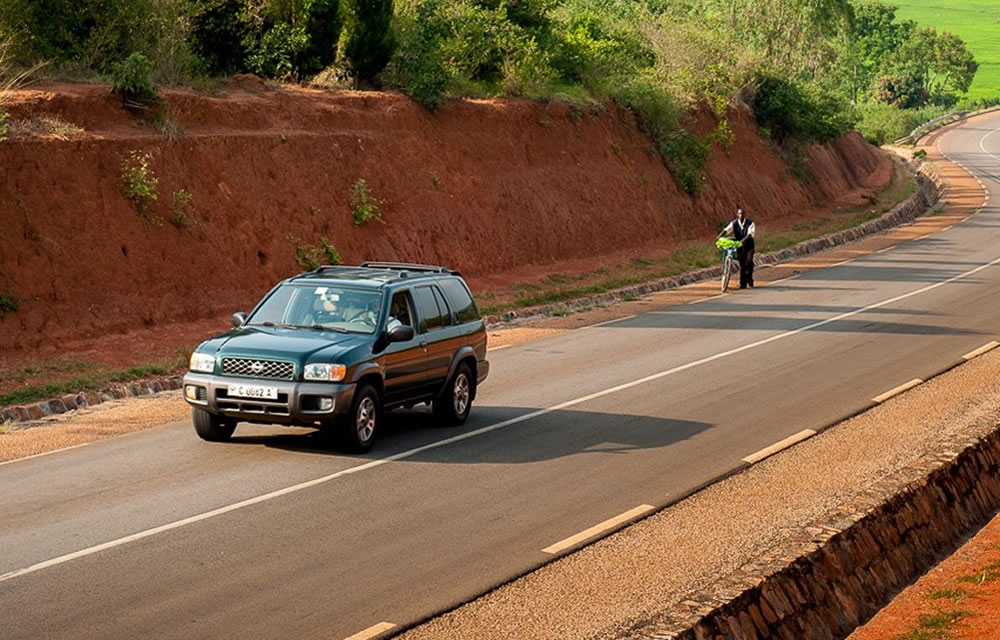
Tour Burundi: Keeping a Car on the Road
Written by Sandra Shibura
The ability to keep a car on the road depends largely on the driver’s driving skills, the state of the wheels, the state of the suspension parts, and generally the condition of the car being driven. In this article, we are writing about vehicle vibrations, wheel balancing, wheel alignment, and taking care of suspension on a regular basis.
Bujumbura was nicknamed by the people that reside in it as Buja la Belle meaning Buja the beauty. Generally, due to its location, climate, size, beauty, positioning, people, and ambiance, Buja is regarded as one of the most beautiful capitals in East Africa. It draws most of these factors from her proximity to the famous Lake Tanganyika.
The History
Bujumbura was been created in 1897 by western missionaries. At that time the city was named “Usumbura”. Usumbura was not occupied at all because of the very old legend where it is said that the King was forbidden to see the Lake. This legend was further complicated by the serious bouts of malaria given that Usumbura was located in a plain alongside Lake Tanganyika. The missionaries brought with them some workers from Tanzania. It is these workers that are believed to be the first occupants of the city. In 1916 when the Germans lost the war, the Belgians became the administrators of Ruanda-Urundi and decided that Bujumbura will be the administrative and political capital of Ruanda-Urundi.
Bujumbura was strategically placed and had an excellent climate with access to Congo. The Belgians decided to build a harbor in Bujumbura to stimulate business between Congo, Tanzania, and Zambia. During the period of the Belgian Mandate, the Governor of Ruanda-Urundi gave to Bujumbura a special Status because they did not use the same laws as was done in other parts of the country. It is believed that the Belgian Administrative officers wanted to separate Bujumbura from Burundi to form an international zone, but the Mwami of Burundi Mwezi Gisabo refused. In 1962, when Burundi got her independence, the name changed to Bujumbura.
Bujumbura and her Life
Bujumbura lies in the low lands at the foot of the Western Rift Valley along the shores of Lake Tanganyika. Whatever means you use to come into Bujumbura the first impression is of a Capital lying alongside the magnificent Lake Tanganyika. The Discovery of Bujumbura will start with a visit to the Central Market located in the city center where, you will find everything you need so as to enjoy your stay in Bujumbura. The Market is modern and organized with colorful designs but you will not miss the noise, the crowds negotiating up to the last penny, and the aroma from the restaurants around. Be sure to visit the main street where you can buy all kinds of electronics and due to the activities in the place the Police are all over to ensure safety and security.
By the time you finish your activities in the central market and the busy main street, we suggest you take a small break and go for a coffee and a small snack at places such as:
- “ Geny’s Café”
- “Aroma”
- “Rusco Plaza”,
Be rest assured that you will enjoy the quality of Burundian coffee.
After a small break, you should go to visit “Le Musée vivant” which is an animal museum. At this time the sun will be up and a bit hot. Furthermore, most people go home for a siesta so it should be time to go back to your hotel. Most hotels in the city center have swimming pools, but there is no harm in visiting Lake Tanganyika where you will have a choice between swimming, sailing, or eating the excellent fish.
The city center is dotted with hotels and you can choose among the hotels as listed under the accommodation section of this magazine. Along Lake Tanganyika, you will have a variety of hotels of different standards and prices but we recommend that you visit Saga Plage, Royal Palm Resort, and Club Hotel Tanganyika.
On the hills overlooking Bujumbura, you can find the burial site of Burundian Independence hero Prince Rwagasore and you can also have a clear view of the city by visiting Le Belvedere and Chez Vaya. There are many places to dine and these include restaurants in the city center and hotels that serve Burundi’s fresh food that include fish like “Mukeke”, “Sangala” or “Indagala”. Some of these places include; Botanika, Roca Golf Hotel, Oasis, Chez Béa traiteur, Le Safran, Kiboko Grill at Ubuntu Residence, Bora Bora Beach Club, La Vigne, Pasta Comedia, Chez Andre, Taj Mahal and Le Kasuku. Once full of the noise in the market, fish at the above restaurants, the sky in Buja gets dark and it is time to enjoy for few hours of “Buja by night” at some very special places such as: Makki, Havana, Chez Kuta, and Cappuccino. However, if your interests are about dancing then the place to be is: Club Havana, Au Monocle, Get Up, and Ruhara.
About the Writer:
Sandra Shibura is the Proprietor of Authentic Burundi Tour and can be reached on +25779710576 or Sandra@ab-tour.com or www.ab-tour.com
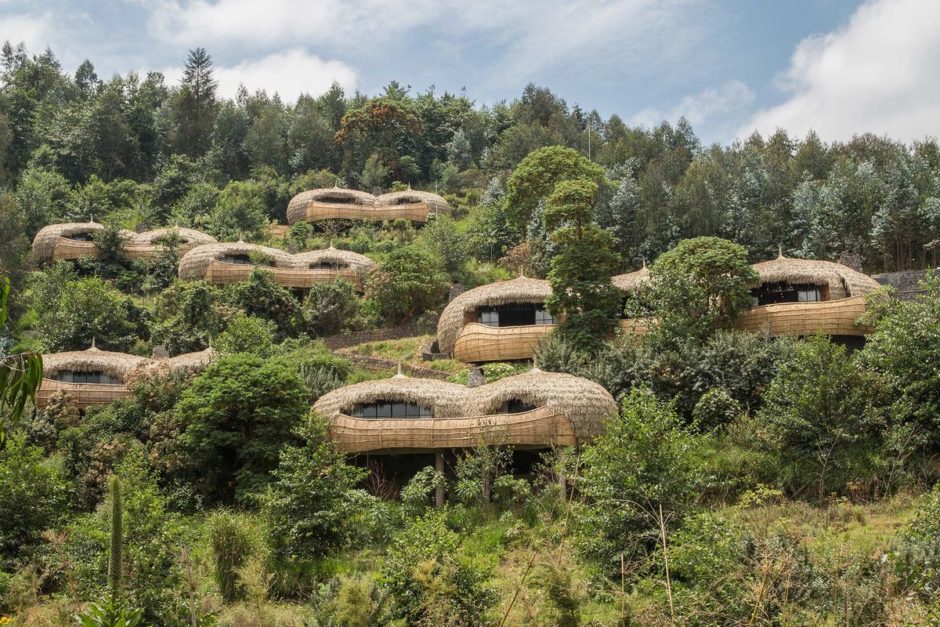
Rwanda Turns Forests Into Tourism Assets
The land of a thousand hills’ as Rwanda is known by her friends from near and far, has in recent years enjoyed a boom in tourism arrivals, and before becoming a victim of its own success with only one major tourism product on offer, acted quickly and decisively to diversify the range of offers to tourists of what to do in the country. The then office for tourism and national parks – ORTPN – now of course part of the Rwanda Development Board, brainstormed over the options of ‘what new’ to put on the market, and it took little time back then to identify the country’s tropical rainforests to be one of the assets tourism could make use of. While sports activities like cycling and boat trips on Lake Kivu too were added, as was birding, it was primarily the forests that held the solution to the diversification of the then Rwandan ‘single focus’ product of gorilla tracking.
Preparations went into high gear in the early part of the last decade to achieve these goals and by 2005 all was in place for the government to formally declare the Nyungwe Forest a national park, elevated from the status of a ‘mere’ forest reserve. Protection of the area dates in fact back to the times when Rwanda was a German colony, with the subsequent colonials, the Belgians, then reaffirming the reserve status, prohibiting encroachment and indiscriminate cutting of the valuable tropical hardwood trees.
Sadly, during the days of the previous regime protective measures for the forest were largely abandoned and only fully restored after the ‘new Rwanda’ rose from the ashes of the genocide and restored law and order in the country.
Located in the south of Rwanda and partly bordering neighbouring Burundi, Nyungwe is part of an ancient medium to high altitude rain-forest belt crossing from Rwanda into the Congo, but population growth and deforestation took their toll on many of those forests over the past 50 years. Still, Nyungwe National Park covers an area of almost 1.000 square kilometres with elevations rising from about 1.600 metres to nearly 3.000 metres above sea level, making it arguably the largest forest national park in all of Africa.
Good annual average rainfall, reaching up to 2.500 mm per year, keeps the park’s rich biodiversity intact and provides a thriving environment for a record 13 species of primates [to the knowledge of the writer only matched by Kibale Forest National Park in Uganda], around 275 bird species of which 24 are endemic to Nyungwe, over 1.060 plant and tree species, over 80 mammal species and some 80 amphibian and reptile species. Especially impressive here is the fact that the ‘black and white colobus’ monkeys are often found in clans numbering several hundred, whereas elsewhere they are counted at best in their dozens or only sees in single-digit numbers. Furthermore, habituation of the ‘golden monkey’ is ongoing in Nyungwe, giving visitors a real and rare ‘bonus’.
What may also be of interest to readers is the fact that the springs of the River Kagera have been traced all the way to the Nyungwe National Park, and while the ‘Source of the River Nile’ is undoubtedly in Jinja / Uganda, some of the more distant headwaters of what eventually becomes the Nile – the Kagera does empty into Lake Victoria and is one of the major contributors to the lake – can be traced all the way to this park.
It is little wonder therefore that Rwanda’s tourism industry swiftly embraced their latest national park and RDB – Tourism and Conservation spared no effort to ‘open up the forest by creating paths and trails, while also training guides able to interpret the incredibly rich variety of flora and fauna to visiting tourists.
Special attention was paid to promoting the new national park abroad at tourism fairs and exhibitions and although Rwanda remains globally best known for its mountain gorilla tracking at the ‘Parc de Volcanoes’ in the west of the country, more and more visitors now use the opportunity of being in Rwanda to also visit the Nyungwe National Park.
Dubai World in fact saw such great potential in the park, that in spite of the global financial and economic crisis – which took its toll on ‘Dubai Incorporated’ too – they committed the funds to construct a luxury eco-friendly lodge right at the edge of the forest, which opened its doors to the public last year. While others of their planned projects in Rwanda were put on hold, due to be reactivated when market conditions will be conducive again, the Nyungwe Forest Lodge became their flagship operation in Rwanda and quickly established itself as ‘the place to stay when visiting the park.
Soon after the lodge opened another novelty was added at the park, when a forest canopy walk was first planned and then constructed, which now allows visitors to ‘walk the tree tops’ and get an insight into the life as it exists in the tall tropical trees. Combined with good interpretation and expert explanations from the well-trained guides the ‘walk in the trees’ opens an entire ‘new world’ for visitors and truly makes it a unique experience not found anywhere else across Eastern Africa so far. The Rwanda Development Board in fact attributes its sectoral performance last year largely to the addition of Nyungwe National Park. Rwanda for the first time ever in 2010 exceeded tourism earnings of 200 million US Dollars and visitor numbers grew by a staggering 14 per cent compared to the already record year of 2009, making it one of the best performing tourism sectors in the whole of Eastern Africa.
The government of Rwanda has also committed itself to further restore the ancient forest belt and by 2035 about a third of the country is supposed to be under ‘forest’ again, up substantially from today’s situation. Gaps in the forest belt are due to be ‘closed’ to have a seamless connection again and to allow game and birds to once more enjoy a habitat as in the old days and other forests, as and where encroached, will also be part of deliberate re-forestation efforts. This is remarkably supported by populations living near the forests, as they finally understood that forests are ‘water towers’ and a source of sustainable supplies of medicinal plants, good for the microclimate and generally able to bring investment and jobs to their villages. Of course, it must be said that Rwanda’s superb sensitisation and education of populations went a long way in achieving the cooperation of the ordinary people.
Plans are also underway to turn more forests from simple and less protected ‘reserves’ into proper national parks, a measure undoubtedly also aimed to cater for more tourist visitors and offer more attractions across the country, and by doing so extending the average stay and average spending of tourist visitors.
Unlike in some neighbouring countries, where such forest national parks, leave alone forest reserves, are habitually encroached and where politicians are rather lukewarm to speak up in favour of strict enforcement and protection, here in Rwanda forest conservation is a key element in promoting tourism, from the Virunga volcanoes’ rainforests – home of the rare mountain gorillas – to the Nyungwe Forest at the border with Burundi.
Tourism and conservation in Rwanda have the full backing of the government, with no if’s and but’s and the success of the sector is evidence enough that it is the right thing to do. Tourism, including forest tourism, is generating additional employment, brings direct foreign investments to the country and is pegging foreign exchange earnings right on top of the economic scale.
Forests for the future and for mankind’s survival – here in Rwanda at least not an empty slogan but part of the vision for a brighter future of the entire country and a significant measure and contribution towards the global fight against climate change.
By Prof. Dr. Wolfgang H. Thome
Twitter: @whthome
Blog: www.wolfganghthome.wordpress.com

Hearing Loss: Are You listening? Well hear this!
Although its prevalence in Uganda is not accurately known, hearing loss can have a devastating impact on the lives of those that are affected. The World Health Organisation has stated that hearing impairment is the most frequent sensory deficit in human populations, affecting more than an estimated 250 million people in the world, and middle ear infections rate as the most common form of childhood illness. One of the reasons hearing loss may be more common than you think is that it is a hidden impairment and often one which is undiagnosed or misunderstood. Children with hearing loss are routinely assumed to be lacking in intelligence, concentration, or
application as they appear to be distracted, ignorant, or disobedient. Adults with hearing loss might be considered rude or foolish when they don’t respond as others think they should.
So what causes hearing loss?
Some causes of hearing loss include: aging, family history of hearing loss, untreated ear infections particularly in childhood, ear canal wax blockage, meningitis, measles, malaria, other childhood illnesses, ear-damaging medications, lack of oxygen at birth, head and neck abnormalities or injuries and exposure to loud noise.
And the consequences?
Hearing impairment in children can have many lasting effects including issues in speech and language acquisition as well as mental, emotional, and social development. Consequently, this can limit opportunities in education, employment, and financial security. Adults with hearing loss find it difficult socially to participate in conversations and may need to guess at what is being said, often being embarrassed when they are mistaken. It is therefore important to do everything possible to prevent hearing loss and to provide treatment and
rehabilitation when required to reduce the impact of any hearing disability.
Ways to prevent hearing loss and reduce its impact Avoid situations where there is excessive noise and wear ear protection when using high-powered tools, lawnmowers, and other machinery. Do not put anything in your ear, even cotton buds, as you can dislodge ear wax further into the ear canal causing discomfort and complications. It is advisable to seek medical treatment for any signs of ear infection, discharge, or pain.
Having children vaccinated against childhood illnesses will ensure a healthier child and prevent the need for strong medicines to treat illnesses, which may cause damage to their hearing.
Treatment
Some causes of hearing loss are treatable with medication or surgery, so require medical intervention. These temporary issues need to be dealt with before permanent hearing loss can be addressed with amplifying devices such as hearing aids.
Rehabilitation
Many people with hearing loss can be successfully fitted with hearing aids to amplify sounds in their environment. This gives them better access to conversational speech and allows them to be better connected with the world around them. When a person with hearing loss wears hearing aids, it does not actually make their hearing ‘normal’ and often they still need assistance to hear clearly, but it does make it possible to hear much better. Like other electronic devices, the technology of hearing aids has advanced significantly other the last ten years. Advanced hearing aids with up-to-date technology are now becoming available across Africa including Malawi.
So how do I know if there is a problem?
One way to test your own hearing is to ask a family member or friend whether they notice you experiencing difficulty hearing. Often others notice a hearing loss before you do, so consider the following:
First Signs of Hearing loss
• Asking people to repeat themselves
• Needing to have the TV volume up louder than is comfortable for others
• Difficulty hearing clearly on the telephone
• Difficulties understanding others if they are not facing you (E.g. in the car)
• Confusion of words in group situations or where there is background noise, such as when in a restaurant or at a family gathering
• Decrease in confidence or desire to socialize with others How can you help someone who has a hearing loss
• Look at the person when you are talking to them
• Say the person’s name first to get their attention before starting to speak
• Do not shout, speak clearly and only a little more slowly
• Reduce background noise at much as possible
• Encourage them to seek medical help
• Maximise the lighting so the face is visible
For further advice on hearing, issues consult your medical practitioner, audiologist, or Ear Nose Throat Specialist
Read More